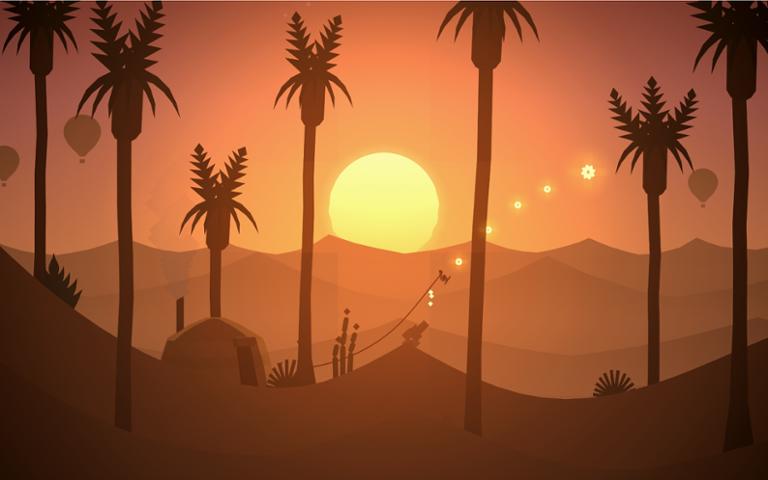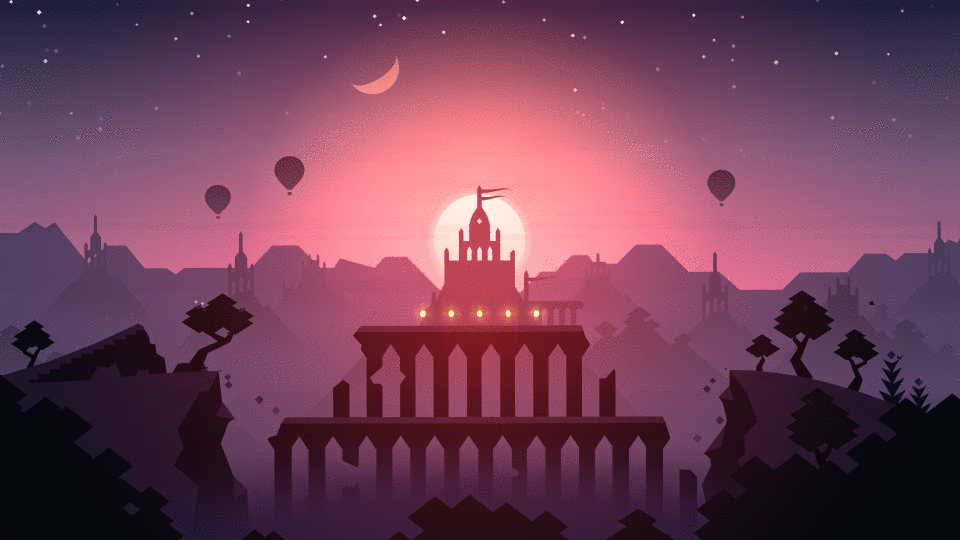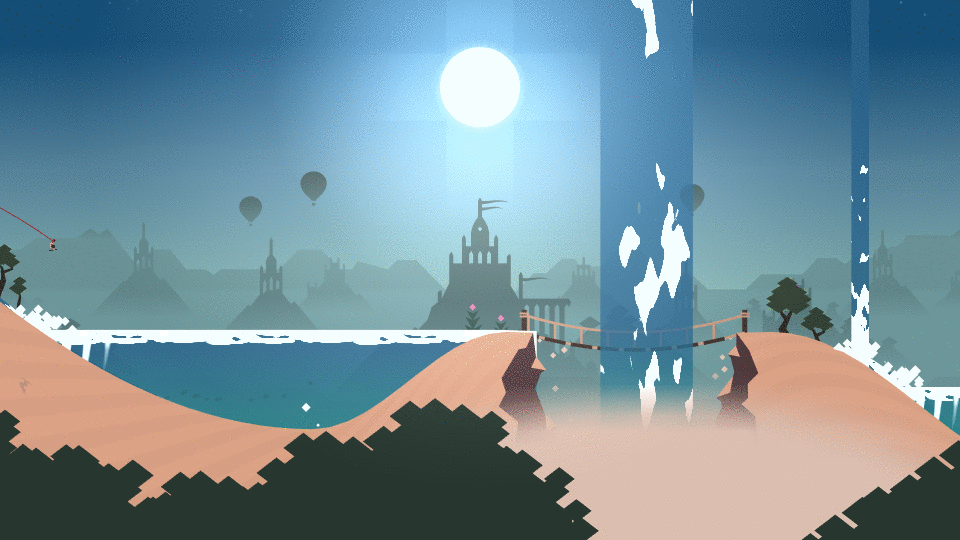
When an iOS or Android game is done right, it resonates. Gamers applaud, developers earn, and the press takes notice. By those metrics, the new "Alto’s Odyssey" may end up threading the mobile gaming needle perfectly. If you’ve not played the game or its predecessor, "Alto’s Adventure," both are endless side-scrollers. A snowboarder (Alto) makes their way through various terrains, weather and locales while attempting to meet stretch goals necessary to level up. This is where "Alto’s Odyssey" is most interesting: leveling up brings additional challenges and in-game features. The ‘level’ doesn’t end when you achieve your goals; nor does the game necessarily get more difficult due to harder terrain or enemies. You’ll eventually crash, which is when you start a journey over, but there’s no hard stop to a level (the creators want you to keep playing). Ryan Cash, founder of Snowman (the studio behind "Alto’s Odyssey") suggests this design was an attempt to make the game feel more natural. “The game’s goal structure allows players to explore an endless, procedural world with small achievable tasks that keep them grounded,” he said. “When your objective is to escape a lemur, or grind a rock wall across a chasm, you find yourself looking at the world of the game differently a little each run, in the same way you would in nature as you explore to take in different sights.”  Gameplay is another subtle ‘win’ for "Alto’s Odyssey." Your only real interaction is tapping on the screen, which lets you leap over (or onto) items. A long-press keeps you flipping mid-air, which helps you score points and makes your character go faster. Harry Nesbitt, lead programmer and artist on the game, tells Dice a focused casual audience was the studio's aim all along:
Gameplay is another subtle ‘win’ for "Alto’s Odyssey." Your only real interaction is tapping on the screen, which lets you leap over (or onto) items. A long-press keeps you flipping mid-air, which helps you score points and makes your character go faster. Harry Nesbitt, lead programmer and artist on the game, tells Dice a focused casual audience was the studio's aim all along:
We were definitely drawn to the accessibility of endless runner style games. They’re really easy to pick up and play in short bursts while simultaneously giving players a sense of long term progression as they level up or improve their skills. But at the same time we wanted to do something more; to create a rich and immersive world in which the game takes place, which sort of almost feels incidental to the game that takes place in it. It really helped to think about this as just a small window into a much larger world, with its own history and culture, so that players could feel grounded and connected to the space, even just for a few minutes of the day.
In-game physics are unreal. If you’re a purist about real-world physics, "Alto’s Odyssey" will disappoint. But accurate physics in games tend to annoy players ("QWOP" comes to mind), so Alto never really losing speed or flipping off flat ground onto slopes is actually refreshing. You won’t bottom-out or slow to a stall, which would end your run anti-climactically. Instead, a crash (followed by some encouraging words splashed on-screen) keeps you engaged. Designed in Unity 3D, "Alto’s Odyssey" taps into Metal 2 for iOS. This was done to achieve a silky 60 frames-per-second throughout the game, and it works perfectly. Going with Metal 2 instead of OpenGL allows much more access to the GPU. "Alto’s Odyssey" never stutters or shakes. Joe Grainger, the game's designer and programmer, said:
We definitely knew we wanted to take advantage of Metal during the development of Odyssey; it was one of the major performance boosters for us during our optimization stage that allowed us to realize a lot of our artistic ambitions on the performance and graphics side. For a lot of our GPU-bound devices, this really did give us a head start on getting the app to our target of 60 FPS. We did have to modify a fair amount of our existing shader code in order to have metal rendering things correctly, but the end result is well worth it: a game that we feel runs smoothly across all our supported devices.
While ‘3D’ evokes ideas of an open-world first-person shooter, "Alto’s Odyssey" is nonetheless a 2D side-scroller. Aside from being a ubiquitous game framework, Unity also helps "Alto’s Odyssey" achieve a parallax effect where the background (with a more muted color scheme to differentiate it) moves at a different rate. “When it come to the design of Alto’s Odyssey, there are a couple of different ways to think about it. At a purely visual level, our Lead Artist & Programmer Harry Nesbitt embraces a sense of clean visual minimalism in the way he crafted the world of the game,” lead producer Eli Cymet told Dice. “The idea with the way everything is depicted in-game is to reduce things to their simplest and clearest depiction, favoring signal over noise. In a practical sense, this means resisting the urge to overcomplicate with detail, instead thinking of ways to ground players in the game’s dunes, canyons, and temple spaces with a cohesive visual style favors bold colors.”  The entire game is buoyed by this simplicity. Unity atop Metal 2 is as technically sound as hushed tones and parallax scrolling are for the gameplay. You can spend the coins you gather in-game at a shop, but there are no in-app purchases. Levels hide behind endless scrolling fun, and there’s never really a point where you feel outgunned by the game difficulty itself. More often, those in-level challenges simply present themselves naturally; your job is to play. Simplicity and minimalism also belie a deep complexity. Unity 3D isn’t simple, nor is Metal 2. Grainger added: “Creating custom tools for the project has saved us an incredible amount of time. Our tools range from simple ways to analyze goal difficulty to balance our learning curve, all the way to automating a specific section of terrain and editing our gameplay sequences that make up the world of Alto’s Odyssey.” As Grainger also noted, the team paid attention to the finer points such as haptic feedback. “We are utilizing Apple's Haptic engine, and have tried to keep the haptics directly linked to player interaction,” he said. “As with any technology we harness, we want to make sure we’re considering the ways it can enhance and delight players while feeling as if it’s serving a function uniquely suited to that moment. In the case of haptics, that means we’ve prioritized immersion by activating them for landing a trick, smashing a rock, snapping a vine, and interacting with other parts of the game world.” "Alto’s Odyssey" is the formula for mobile perfection. Should Apple dish out more awards at this year’s WWDC, we’d expect this game to take one home. It’s gorgeous, approachable, challenging, technically sound and – best of all – a lot of fun.
The entire game is buoyed by this simplicity. Unity atop Metal 2 is as technically sound as hushed tones and parallax scrolling are for the gameplay. You can spend the coins you gather in-game at a shop, but there are no in-app purchases. Levels hide behind endless scrolling fun, and there’s never really a point where you feel outgunned by the game difficulty itself. More often, those in-level challenges simply present themselves naturally; your job is to play. Simplicity and minimalism also belie a deep complexity. Unity 3D isn’t simple, nor is Metal 2. Grainger added: “Creating custom tools for the project has saved us an incredible amount of time. Our tools range from simple ways to analyze goal difficulty to balance our learning curve, all the way to automating a specific section of terrain and editing our gameplay sequences that make up the world of Alto’s Odyssey.” As Grainger also noted, the team paid attention to the finer points such as haptic feedback. “We are utilizing Apple's Haptic engine, and have tried to keep the haptics directly linked to player interaction,” he said. “As with any technology we harness, we want to make sure we’re considering the ways it can enhance and delight players while feeling as if it’s serving a function uniquely suited to that moment. In the case of haptics, that means we’ve prioritized immersion by activating them for landing a trick, smashing a rock, snapping a vine, and interacting with other parts of the game world.” "Alto’s Odyssey" is the formula for mobile perfection. Should Apple dish out more awards at this year’s WWDC, we’d expect this game to take one home. It’s gorgeous, approachable, challenging, technically sound and – best of all – a lot of fun.


